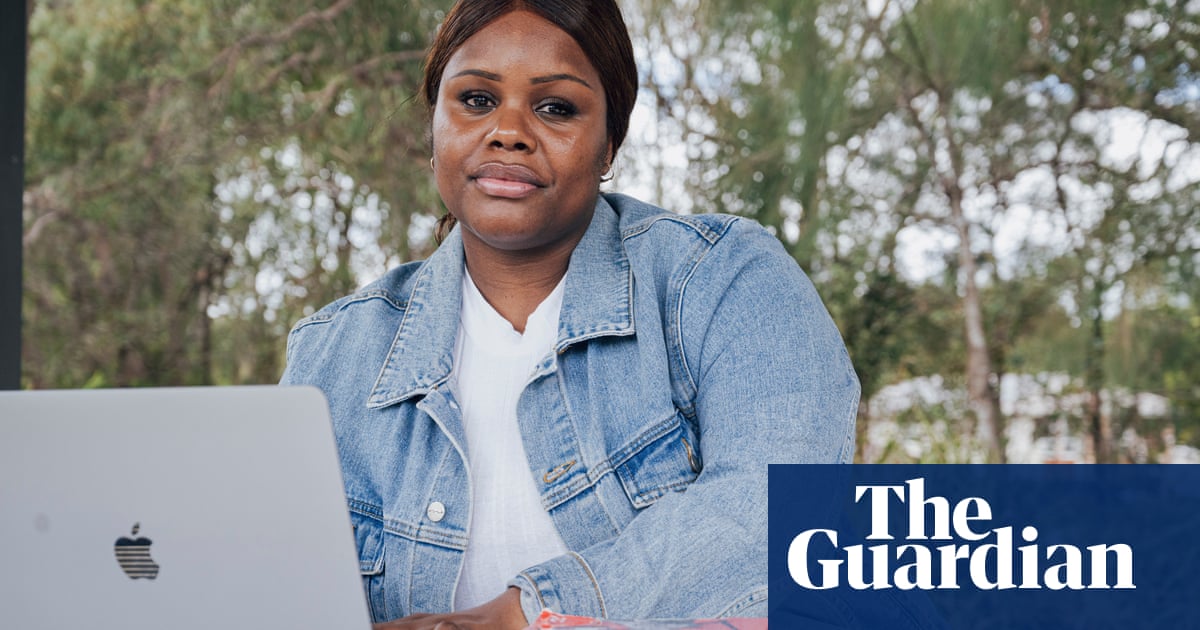
A Westfield shopping centre isn’t an obvious place to get homework done. But for Deborah Botende, it was one of her only options.
Botende grew up in foster care in Brisbane and had no internet access at home. Throughout high school, she’d stay back after her retail shift to use the shopping centre’s wifi – completing her schoolwork on a secondhand laptop.
On days she wasn’t working, Botende would walk to the library – but was limited by early closing hours.
“It was really, really hard on me, I found myself behind on assignments, or not understanding tasks,” she says. “[Having no internet] was such a significant barrier to my education – I had to constantly be proactive.
“I’d use the internet after work and get home late to revise on my own … I felt I had no choice, this was my reality.”
As end-of-year exams begin to roll out across the nation, The Smith Family is calling on the federal government to create a national device bank in order to close digital inclusion gaps among young people.
According to the latest Australian Digital Inclusion Index (ADII), almost a quarter of Australians are digitally excluded – meaning they have don’t have access to essential technology, such as fast and reliable internet and digital devices.
The CEO of The Smith Family, Doug Taylor, says about 10 million laptops, tablets and PCs have been refreshed by corporate bodies and governments in the past five years. If they were recycled, 10 million students could benefit.
“Digital poverty is the new frontier of how people experience poverty,” Taylor says. “It’s a barrier over and above access.”
The device bank wouldn’t be without precedent. Since 1993, the Canadian government has refurbished and distributed almost two million digital devices as part of a Computers for Schools program designed to reduce electronic waste and improve the digital skills of young people.
Similarly, The Smith Family has recycled about 6,500 laptops as part of its broadband initiative – with more than 80% of students experiencing an improvement in grades once receiving a device, according to the organisation.
Taylor says with the rapid expansion of artificial intelligence and new technologies, digital skills were now just as important as literacy and numeracy when it comes to a child’s education.
“We know more jobs will require a tertiary education, and it’s hard to consider university without a laptop – or transitioning to employment,” Taylor says.
“At the same time, schools are now seeing AI as inevitable and a tool – if you’re unable to access that, how further disadvantaged are you going to be in your education?”
Affordability is the principal reason behind digital exclusion. ADII research estimates 65% of people living in public housing are under digital affordability stress – meaning they need to pay more than 5% of household income to maintain quality, reliable connectivity – rising to 70% of people without employment.
With no national digital inclusion framework – Taylor says struggling families have to navigate limited state and territory government subsidies and loans, policies that are “all over the place”.
There has been some movement in recent years. The Queensland government has recently introduced funding for public schools to have devices partially reimbursed for financially disadvantaged students. A subsidy scheme is also in place to upgrade broadband internet for students studying remotely.
In Victoria, schools opt to provide devices, either via loan or shared class set, or enforce a Bring Your Own Device (BYOD) program, where parents are invited to supply a digital device for their child to use and own. In New South Wales, principals can approve the loaning of digital devices to students to use at home – but this isn’t mandatory.
“It’s one of those solvable things,” Taylor says. “We’ve got to think about universal access. I was talking to a student last week who went to a lecture and was one of the only kids in the whole environment who wasn’t taking notes on a laptop. The penny dropped.
“If kids don’t feel they’re a part of their school environment, it affects their ability to make the most of their education. Grades suffer, and attendance suffers.”
To Botende – who’s just completed a tertiary degree with the aid of a donated laptop – people from low socioeconomic backgrounds are already disadvantaged in a range of areas.
“Digital inclusion seems so basic,” she says. “But it levels the playing field.”